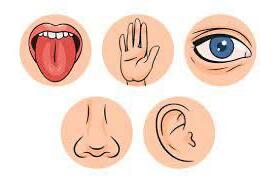What is Meditation?
Meditation is a way to properly relax and boost self awarness using techniques such as mindfulness, or focusing the mind on a particular activity, object or thought.
Meditation is practiced in numer ous religions and traditions and is used for many things but it is mainly used to significantly reduce stress, anxiety, pain and depressionas well as enhancing peace, perception, self concept, and well being.
Usually the morning is considered to be the best time to meditate, since the mind is quite fresh, most people are also less likely to doze off .
The History Of Meditation
The history of meditation dates back to as early as 5000 BC but the truth is no one knows for absolute certain when meditation officially started. There are multiple references across different cultures and religions – including Judaism, Islam, and Christianity – to meditative-like practices, which all seem to have contributed to and inform the practice known widely today.
The word meditation stems from meditatum, a Latin term that means ‘to ponder.’ Through the practice of meditation, we can seek to find a better connection with our body in the everyday moments that we often let pass us by, and create stronger awareness for how our emotions influence our behavior.
Although meditation as a practice today is pretty common and widespread, it’s good to understand that the origins and roots of meditation go back a long way. Today, meditation has been and continues to be adapted to suit our lives and going back to its roots can help you to develop a strong appreciation for how broad the practice is, as well as how it developed across different countries at different points in time.
Facilitative Mediation
In facilitative mediation or traditional mediation, a professional mediator attempts to facilitate negotiation between the parties in conflict. Rather than making recommendations or imposing a decision, the mediator encourages disputants to reach their own voluntary solution by exploring each other’s deeper interests.
Court-Mandated Mediation
More and more companies are in serting alternative dispute resolution clauses in their contracts with cus tomers and vendors—and even in some cases, in agreements with their own employees. ADR clauses can be beneficial for all concerned if it means avoiding the cost, delay, and uncer tainty of going to court. Mandated mediation, in particular, may offer more creative solutions, protection of confidentiality, and preservation of important relationships as compared to litigation.
TYPES OF
MEDITATION
Evaluative Mediation
Evaluative mediation is a process modeled on settlement conferences held by judges. An evaluative mediator assists the parties in reaching resolution by pointing out the weaknesses of their cases, and predicting what a judge or jury would be likely to do.
Transformative Mediation
The transformative approach to mediation does not seek resolution of the immediate problem, but rather, seeks the empowerment and mutual recognition of the parties involved. Empowerment, according to Bush and Folger, means enabling the parties to define their own issues and to seek solutions on their own.
Stages Of
Normally, the level of consciousness we operate from will coincide with the stage of development we have reached. However, if we encounter a situation that triggers one of our limiting survival, safety or security beliefs we will immediately drop down to one of the first three levels of consciousness. For example, if I am 36 years old—in the middle of the individuating stage of development—and I lose my job and my savings, I will immediately drop down to the survival level of consciousness.
Meditative Chants
A mantra is a syllable, word, or phrase that is repeated during meditation. Mantras can be spoken, chanted, whispered, or repeated in the mind. Most mantra meditation techniques have two essential components: mindfulness meditation and mantra recitation or chanting. While this age-old practice is known to have Buddhist and Hindu roots, forms of “sacred word” recitation exist within a great variety of spiritual traditions, including JudeoChristian and Shamanic. Nowadays, mantra practice is also gaining popularity as part of secular mindfulness practice.
Box Breathing
Box breathing consists of you inhaling for 4 seconds, holding your breath for another 4 seconds, then exhaling for 4 seconds and holding for another 4 seconds before inhaling again.
Box breathing is what many army forces like marines use when they need to focus and “steel their nerves” before entering high pressure situations
With the 54321 method you have to Start with deep breathing. Breathe in for 5 seconds, hold the breath for 5 seconds, and breathe out for 5 seconds. Continue this pattern until you find your thoughts slowing down.
Whilst doing this its better to keep your eyes open so you can focus on your surroundings and be aware.

Mandala

A mandala is a geometric configuration of symbols. In various spiritual traditions, mandalas may be employed for focusing attention of practitioners and adepts, as a spiritual guidance tool, for establishing a sacred space and as an aid to meditation and trance induction. In the Eastern religions of Hinduism, Buddhism, Jainism and Shintoism it is used as a map representing deities, or especially in the case of Shintoism, paradises, kami or actual shrines. A mandala generally represents the spiritual journey, starting from outside to the inner core, through layers.
on the next page are a few examples you can colour in if you feel like it.

The mountains and valleys
The hand technique woks by running your finger in and out of the lines between your hand whilst you do it you should imagine that you are climbing mountains and descending into valleys. This is meant to make you feel calmed and peaceful.
